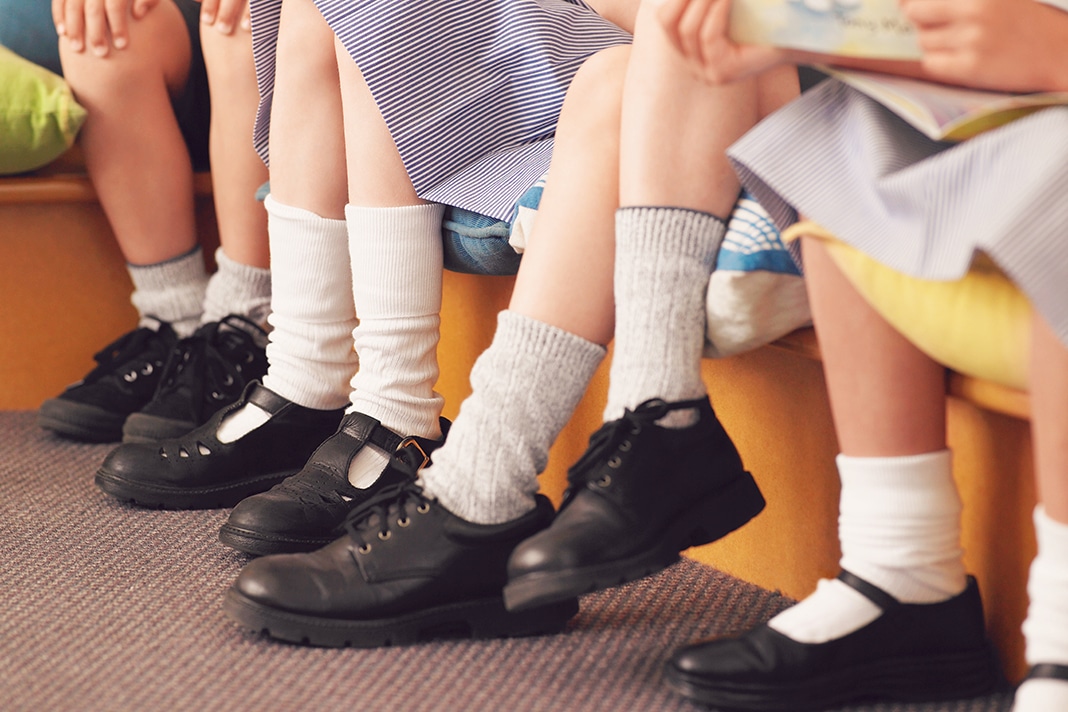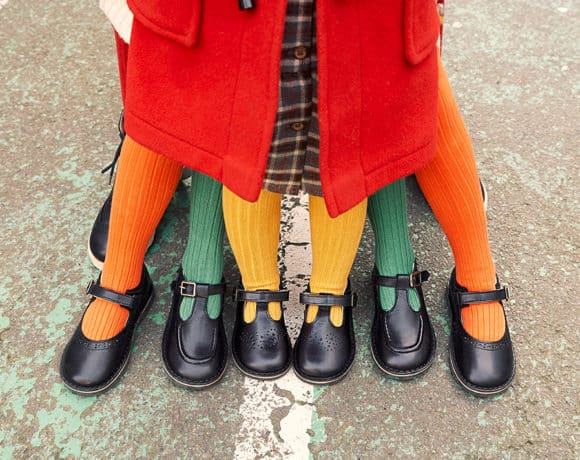A new pair of school shoes is a rite of passage come August. Read our tips for picking the best shoes for your littles
Words: Justin Taggart
Getting ready for a new school term in September is a very busy, not to mention costly, business, and finding a good pair of proper fitting school shoes is one of the most important purchases you’ll make for the year ahead. But apart from stationary, finding a quality pair of school shoes for your little scholar should be top of the list.
The average child will wear their school shoes for 1,000 hours and take one million steps before they are ready to move onto the next. Also as little people’s feet are still growing and developing, choosing the correct shoes is paramount. Good shoes help to protect delicate joints, ligaments and bones and increase coordination to reduce trips and falls.
How to buy the best school shoes for your children
1. Your child’s shoes should provide support and stability. Natural uppers such as real leather are durable as well as breathable, while synthetic leather is hard-wearing and water resistant.
2. If your child plays football or other sports in their playtime, make sure their shoes are hard-wearing enough to be able to endure this. They should also have a flexible and non-skid sole: padded soles are forgiving on the feet too for little ones who loved to run and play.
3. Remember that younger children may not be able to tie their shoes very quickly or at all – this is when buckle or Velcro fastenings come in handy.
4. Time it right, and go just before school starts. Don’t buy school shoes before the summer holidays, or in the first few weeks of the holidays . While it’s tempting to be super-organised, kids’ feet grow at a very rapid rate and what fits at the start of the holidays could be too small come the new school term.
5. Always get your child to try the shoes on, and feet are seldom precisely the same size, so always buy for the larger foot.When parents estimate their children’s shoe sizes, or buy shoes a size too big to make them last longer, they risk giving their kids permanent foot, ankle and knee problems.
6. When checking fitting at home, you want to make sure the shoes don’t rub or cause pain in any area of the foot. Press down on the toe area while the child is in the shoes to make sure there is plenty of space for toe wiggling. Make sure you can bend the shoe in your hand without much effort and check toe flexibility; it should bend with your child’s toes. Look for a stiff heel, too; press on both sides of the heel counter. It shouldn’t collapse. Get them to walk around inside and try them on with the socks they’d wear to school.
7. A couple of days before going back to school, encourage your child to wear their new shoes around the house to break them in a bit and ensure when the first day does come around they are not going to end up with achy or blistered feet.
8. Don’t expect the shoes to last forever, with jumping, climbing and running around their shoes can take a bit of a battering. However, a bit of simple shoe care can really help them to last longer; a new insole can make them feel as good as new while a polish on a Sunday evening can keep them looking smart.
9. If you can, think about buying a second pair. Not only do shoes need time to “breathe”, frequently swapping out a child’s shoes can reduce rubbing, blisters and other discomfort. Ensuring your child has at least two pair of well-fitting shoes will also cut back on wear and tear.
Justin Taggart is the commercial director at children’s footwear brand Chipmunks Footwear
Read more features at absolutely-mama.co.uk






NO COMMENT